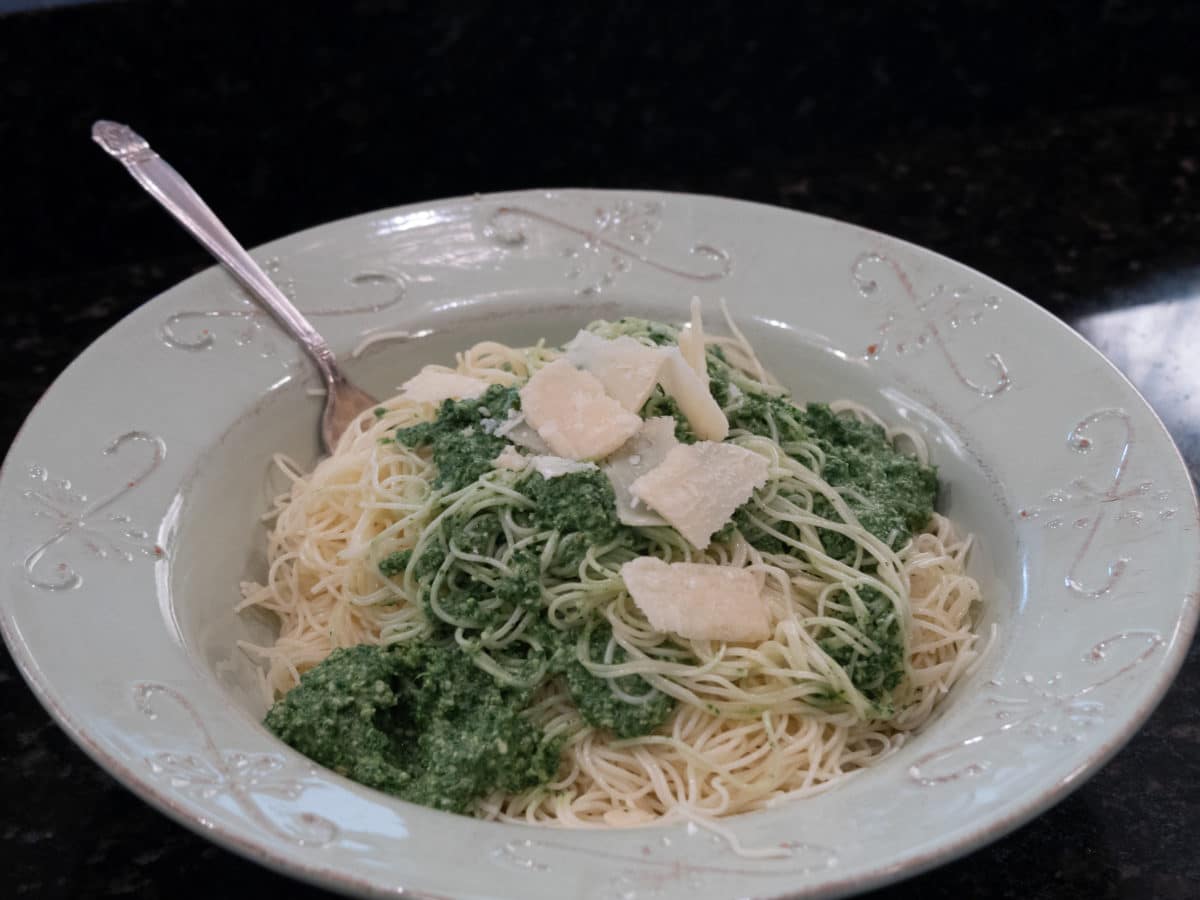This recipe uses foraged stinging nettles, which must be collected with care as uncooked nettles will sting bare skin. Once cooked, however, nettles lose their sting and have lovely flavor similar to spinach. They are also highly nutritious. To learn more about how to identify and cook stinging nettles, watch the episode of Outside & In with The Cook’s Cook in which forager Rachel Goclawski teaches host Denise Landis how to forage for this interesting and prolific wild green.
Ingredients
- •473 ml (2 cups) chopped fresh nettle leaves*
- •709 ml (3 cups) fresh basil leaves
- •237 ml (1 cup) chopped wild mustard greens
- •237 ml (1 cup) grated Parmesan cheese (preferably Parmigiano Reggiano)
- •3 garlic cloves
- •177 ml (3/4 cup) raw pine nuts
- •15 ml (1 tablespoon) lemon juice
- •237 ml (1 cup) extra-virgin olive oil
- •Sea salt
*Stinging nettles must be collected with care, as uncooked nettles will sting bare skin. Wear heavy gloves, long sleeves, and long pants. For more information, watch the episode of Outside & In with The Cook’s Cook in which Rachel Goclawski teaches Denise Landis how to forage for stinging nettles.


Preparation
- Set aside a large pan of water and ice. Bring a large pot of water to a boil. Wearing rubber gloves and using tongs, add the raw nettles to the boiling water and cook until wilted, about 2 minutes. Drain nettles and quickly transfer to the ice water. The chilled wilted nettles no longer will sting and can be handled with bare hands. Drain well and squeeze out excess water.
In a food processor or blender, coarsely chop the nettles. Add basil and mustard greens, and pulse a few times. Add the cheese, garlic, pine nuts, and lemon juice. Chop to make a coarse paste.
With the motor running, slowly drizzle in the olive oil. Taste the mixture and season to taste with salt. Process again until the texture is to your liking — slightly coarse or very smooth — and adjust salt again as needed. The pesto may be served over hot or cold pasta, used as a spread on toasted bread, or added to soups, sauces, or dressings. It freezes well if stored in an airtight container.

